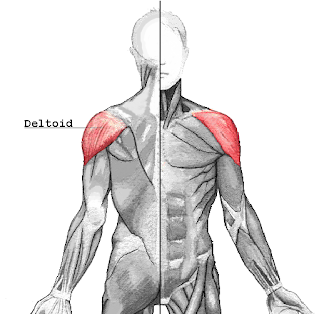Subclavius muscle:-
The subclavius is a small triangular muscle, placed between the clavicle and the first rib. Along with the pectoralis major and pectoralis minor muscles, the subclavius muscle makes up the anterior wall of the axilla.
 Structure:-
Structure:-
It arises by a short, thick tendon from the first rib and its cartilage at their junction, in front of the costoclavicular ligament.
The fleshy fibers proceed obliquely superolaterally, to be inserted into the groove on the under surface of the clavicle between the trapezoid ligament and conoid ligaments, which collectively form the coracoclavicular ligament.
 Innervation:-
Innervation:-
The nerve to subclavius (or subclavian nerve), which arises from the point of junction of the fifth and sixth cervical nerves, where is called the upper trunk of brachial plexus, innervates the muscle .
Variation:-
Insertion into coracoid process instead of clavicle or into both clavicle and coracoid process. Sternoscapular fasciculus to the upper border of scapula. Sternoclavicularis from manubrium to clavicle between pectoralis major and coracoclavicular fascia.
Function:-
The subclavius depresses the shoulder, carrying it downward and forward. It draws the clavicle inferiorly as well as anteriorly.
The subclavius protects the underlying brachial plexus and subclavian vessels from a broken clavicle - the most frequently broken long bone.
Origin:-
first rib and cartilage
Insertion:-
subclavian groove of clavicle (inferior surface of middle third of clavicle)
Artery:-
thoracoacromial trunk, clavicular branch
Nerve:-
nerve to subclavius
Actions:- depression of clavicle.
Ads :
The subclavius is a small triangular muscle, placed between the clavicle and the first rib. Along with the pectoralis major and pectoralis minor muscles, the subclavius muscle makes up the anterior wall of the axilla.
 Structure:-
Structure:-It arises by a short, thick tendon from the first rib and its cartilage at their junction, in front of the costoclavicular ligament.
The fleshy fibers proceed obliquely superolaterally, to be inserted into the groove on the under surface of the clavicle between the trapezoid ligament and conoid ligaments, which collectively form the coracoclavicular ligament.
 Innervation:-
Innervation:-The nerve to subclavius (or subclavian nerve), which arises from the point of junction of the fifth and sixth cervical nerves, where is called the upper trunk of brachial plexus, innervates the muscle .
Variation:-
Insertion into coracoid process instead of clavicle or into both clavicle and coracoid process. Sternoscapular fasciculus to the upper border of scapula. Sternoclavicularis from manubrium to clavicle between pectoralis major and coracoclavicular fascia.
Function:-
The subclavius depresses the shoulder, carrying it downward and forward. It draws the clavicle inferiorly as well as anteriorly.
The subclavius protects the underlying brachial plexus and subclavian vessels from a broken clavicle - the most frequently broken long bone.
Origin:-
first rib and cartilage
Insertion:-
subclavian groove of clavicle (inferior surface of middle third of clavicle)
thoracoacromial trunk, clavicular branch
Nerve:-
nerve to subclavius
Actions:- depression of clavicle.
Ads :













